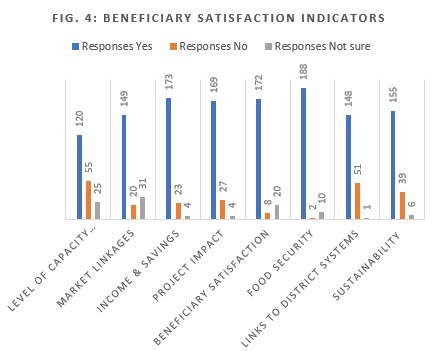Our results
A total of 200 families (roughly 1,600 household members of the participating cooperatives) have directly benefited from various SLCC projects in agriculture and trainings creating job opportunities for hundreds of women and youth over the four years in Kono
SLCC’s work with farmers in Kono is rated as highly effective and the organization is credited with the implementation of a World Bank supported Life after Diamonds (LaD) project (2011-2014) in Kono which created significant changes and improvement in the livelihoods of mining affected communities in Kono. Similarly, the support provided by Manos Unidas during the last four years enabled the SLCC to work with farmers in addressing critical indicators related to farmer outputs in the district. For instance, an evaluation of past SLCC projects and activities indicates the following results:
- SLCC targeted communities in the last four years show an increase of 15% in beneficiary production volumes compared to a persistent 10% in other district communities.
- A total of 200 families (roughly 1,600 household members of the participating cooperatives) have directly benefited
- A total of 200 families (roughly 1,600 household members of the participating cooperatives) have directly benefited from various SLCC projects in agriculture and trainings creating job opportunities for hundreds of women and youth over the four years in Kono;
- There has been observable increase in smallholder farmer incomes, especially women in targeted SLCC operational areas and communities.


Analysis of annual beneficiary and stakeholder satisfaction response surveys consistently indicates significant intervention successes. Fig.4 illustrates that SLCC’s highest intervention impacts are made on improving ability of ASM stakeholders to enhance food security and in improving farmer incomes and savings. Generally, beneficiaries appear satisfied with the way how activities are conducted including their participation in resolving their needs. Meanwhile and although significant in every way, the score on capacity remain a key development issue for our work in ASM communities. This is followed by the need of more efforts to strengthen links between beneficiaries and district duty bearers and markets.

